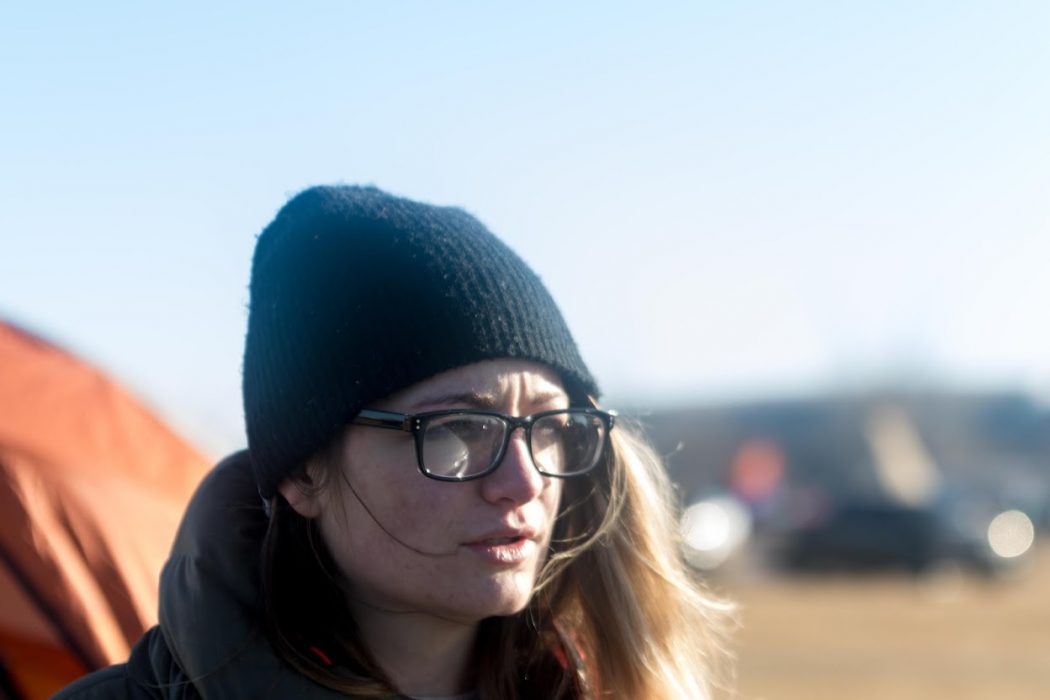#DAPL takeaway: Not-so-new white stereotype
As a white woman in America, it’s not very often that I feel uncomfortable in my own skin.
That changed this Thanksgiving when I travelled to the Standing Rock Indian Reservation with a group of Native American students from Utah State University. In the time I’ve had to reflect over the experience, I’ve realized my discomfort was partially, if not entirely, my fault.
Increasingly, it feels like being white in the United States is becoming synonymous with a set of beliefs and ideals I don’t espouse — alt-right xenophobia and conservative extremism being some of the most troubling. In many communities, that stereotype didn’t just begin with the Trump campaign or the results of the 2016 presidential election.
For indigenous people like those protesting the Dakota Access Pipeline (DAPL) in North Dakota, white people have represented those ideas for a long time; if not since the first white settlers stumbled upon the American continent, then at least as long as those settlers’ presence came to represent a process of colonization that some indigenous activists argue their communities have yet to recover from.
So it’s entirely my fault — and entirely typical of this perhaps new, perhaps not-so-new white stereotype — that I didn’t think about what it would mean for me to set foot on ground sacred to Native Americans until I did. It should come as no surprise to me that some activists want the pipeline protest to remain an indigenous fight, especially given the way I saw white activists behave within the boundaries of Očeti Sakowin Camp.
There were signs everywhere proclaiming the sanctity of the camp, calling it “a place of prayer and ceremony.” Many of the same signs fiercely declared that “absolutely no drugs or alcohol” were allowed in the camp. Yet I witnessed white people smoking and drinking, not to mention eating and utilizing the clothes and blankets graciously provided in camp.
I can say that I didn’t take a single resource from that camp. I brought and ate my own food, drank my own water and relied on my own blankets to protect me, admittedly pretty inadequately, from the frigid North Dakota nights.
Yet I know my presence still left an imprint on that camp. It’s impossible to say for sure whether or not — and how — my presence as a journalist impacted the experience the students I travelled with had in the camp. But that alone is enough to validate concerns about white protesters.
Native Americans had the cultural awareness and experience to treat Očeti Sakowin Camp as a sacred space. I, on the other hand, had no idea what that looked like or how I should behave.
At one point, sitting in a decolonization seminar which provoked an entirely different kind of discomfort than my frozen toes, the topic of mainstream white DAPL opponents came up. One public opponent, the actress Shailene Woodley, was quoted saying, “We are all indigenous to the world.” The indigenous woman who presented the seminar explained the potential harm inherent in that statement, which she said “erases” the idea that indigenous people have rights to the land they are indigenous to.
That alone was enough to make me stop and think long and hard about what my presence in the camp really meant. Was I there as a prayerful activist to offer my support however I could, or as yet another would-be protester drawn to a romanticized, Burning Man-esque ideal of Standing Rock?
With my press badge to shield me, I could say I was in Očeti Sakowin Camp with a purpose, to fulfill a specific role. But as someone increasingly troubled by what my skin appears to mean to the rest of America, I would implore other activists thinking of making the trip to think first and not to just plan for the cold. Plan to tread on sacred ground.
Don’t just go to get arrested. Go to pray, go to volunteer or don’t go at all.
— Alyssa Roberts is a Vegas native with absolutely no love for the North Dakota cold. She spends her free time drinking coconut soy lattes, watching VICE documentaries and looking for every possible excuse to not wear pants.
@alyssarbrts

